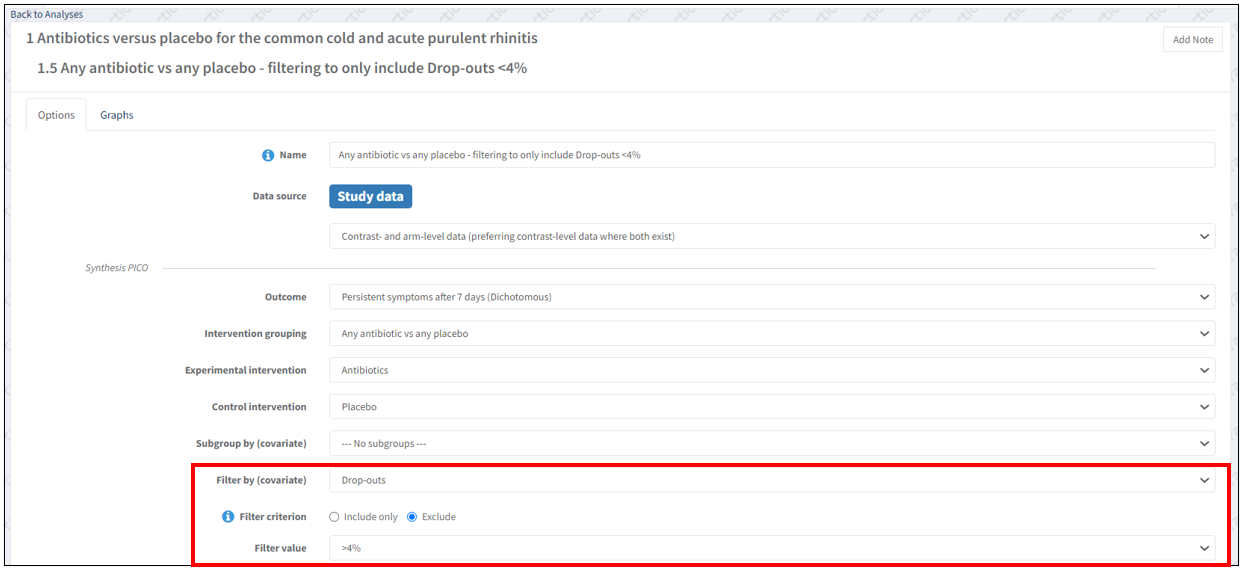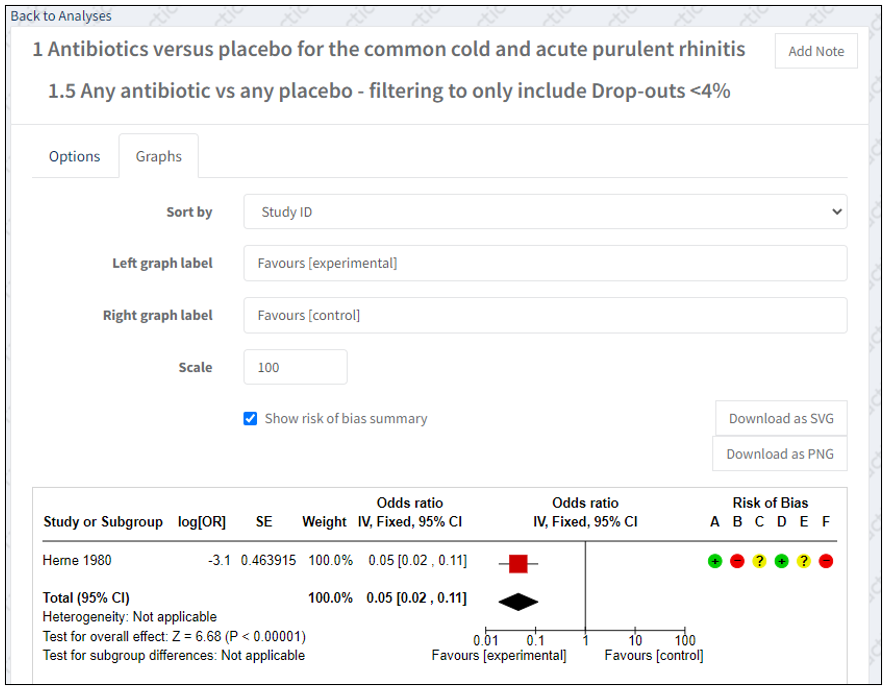Sensitivity analyses
This page details the steps to configure 'automatic' analyses using study centric data. All new protocols created from 25 April 2023 have study centric data management enabled.
See Should I use study centric data management in my review?
A sensitivity analysis is a repeat of a meta-analysis in which alternative decisions are substituted for decisions that were arbitrary or unclear, in order to test how sensitive the results of the analysis are to those decisions. More information is available in Section 10.14 of the Cochrane Handbook for Systematic Reviews of Interventions.
When setting up the review criteria, you can define covariates and associated categories. Covariates are study characteristics that might influence the size of the intervention effect. As an author, you should predefine at the protocol stage which study characteristics you plan to investigate with subgroup analyses or to filter by for sensitivity analyses.
Before you begin, you need to have set up your review criteria, entered your results, and created your analyses (steps 1 to 3 of using data centric data).
When investigating heterogeneity by subgrouping an analysis by a study characteristic (covariate), you may have identified that a certain characteristic did impact the results. With the filter you can then generate a sensitivity analysis where you filter out results with that characteristic to investigate the impact on the synthesis.
On the main Analyses page, create or select the Analysis you want to filter for a sensitivity analysis. On the Option tab, within the Synthesis PICO, you can specify which covariate your want to filter by and define if you want to include or exclude certain studies with certain filter values (the predefined Covariate Categories). It is also useful to indicate this is a sensitivity analysis in the Analysis Name.
The example is filtering by the covariate 'Dropouts'; excluding studies with a dropout rate of more than 4%.
Open the graph tab and see that an analysis excluding results with >4% Dropouts is created.

